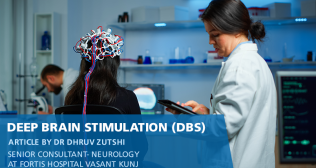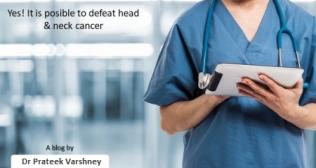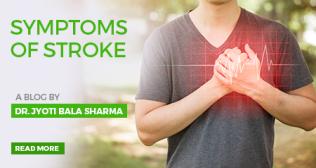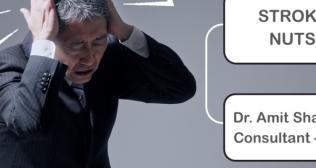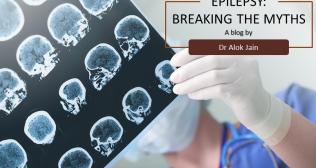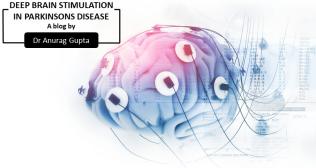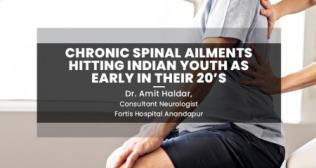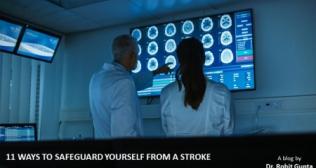
Stroke Rehabilitation: Enhancing Recovery and Quality of Life for Survivors
Life can change in an instant. A stroke, whether it happens to you or a loved one, is a sudden and often devastating event that disrupts life without warning. In the immediate aftermath, the focus is rightly on emergency medical treatment to save a life. But once the immediate crisis has passed, a new journey begins, one that is equally critical. This is the journey of stroke rehabilitation, a proactive and hopeful process dedicated to healing, recovery, and rediscovering a full and meaningful life.
The path after a stroke can seem daunting, filled with uncertainty about the future. It is a marathon, not a sprint. But it is important to know that recovery does not happen by chance. It is the direct result of a structured, compassionate, and scientifically-grounded stroke rehab program designed to help the brain heal and the body relearn, empowering survivors to regain as much independence as possible.
The Goal of Stroke Rehabilitation Is More Than Just Physical
The primary goal of stroke rehabilitation is to help a survivor become as independent and functional as possible. This process is holistic, addressing the wide range of ways a stroke can affect a person. While regaining physical abilities like walking or using one's arm is a major focus, the scope of stroke therapy is much broader.
It encompasses rebuilding cognitive skills like memory and problem-solving, restoring communication abilities, and providing crucial emotional support to cope with the psychological impact of such a life-altering event. The ultimate aim is to improve the survivor’s quality of life, allowing them to participate in family and community activities that bring them joy and a sense of purpose. It is about treating the whole person, not just the physical effects of the stroke.
The Science of Hope Is Neuroplasticity
For a long time, it was believed that the adult brain was fixed and that brain cells lost to a stroke were gone forever, with no hope of recovery. We now know this is not true. The foundation of all modern stroke rehabilitation is a remarkable concept called neuroplasticity.
Think of your brain's communication network as a complex system of roads. A stroke acts like a major earthquake, destroying some of these roads. Neuroplasticity is the brain’s amazing, built-in ability to reroute traffic. It can form new connections and create new pathways to bypass the damaged areas. The repetitive, focused, and challenging tasks performed during stroke therapy are what stimulate and guide this rerouting process. Every exercise and activity helps to strengthen these new neural pathways. This is the science that fuels the hope and reality of stroke recovery.
The Core Components of a Stroke Rehab Program
Effective stroke rehab is not a one-size-fits-all program. It is a highly personalized plan carried out by a multidisciplinary team of specialists who work together with the survivor and their family.
Physical Therapy to Regain Movement and Strength
A physical therapist (PT) focuses on restoring movement, balance, and coordination. After a stroke, many survivors experience weakness or paralysis on one side of the body (hemiparesis or hemiplegia). PTs use targeted exercises to strengthen weakened muscles, improve walking ability (gait), enhance balance to prevent falls, and increase overall mobility. This therapy is essential for regaining the ability to stand, walk, and navigate one's environment safely.
Occupational Therapy to Relearn Daily Activities
While a PT helps you learn to walk to the kitchen, an occupational therapist (OT) helps you do things once you get there. OTs focus on improving a survivor's ability to perform activities of daily living (ADLs). This includes essential tasks like dressing, bathing, grooming, and eating. They are experts at finding practical solutions, teaching adaptive techniques, and recommending special equipment to make these daily tasks manageable, promoting independence and self-sufficiency.
Speech and Language Therapy to Restore Communication
A stroke can often damage the parts of the brain responsible for language. A speech-language pathologist (SLP) works with survivors who have aphasia, a condition that affects the ability to speak, understand language, read, or write. SLPs also treat dysphagia, or difficulty swallowing, which is a common and serious complication after a stroke. They provide exercises and strategies to improve communication and ensure safe swallowing to prevent choking and pneumonia.
Cognitive and Psychological Support
A stroke can affect thinking and emotional well-being. A neuropsychologist may be part of the team to help with cognitive issues like memory loss, poor concentration, and impaired problem-solving. Equally important is addressing the emotional journey of stroke recovery. It is very common for survivors to experience depression, anxiety, and frustration. Psychologists and counselors provide essential support to help survivors and their families cope with these emotional challenges.
Where Does Stroke Rehabilitation Take Place?
The setting for stroke rehab depends on the severity of the stroke and the needs of the patient.
Inpatient Rehabilitation Facility: These offer intensive programs, typically with at least three hours of active therapy a day, in a hospital-like setting.
Skilled Nursing Facility: These provide a less intensive level of therapy than an inpatient facility.
Outpatient Clinic: After returning home, a survivor may continue their therapy by visiting an outpatient clinic several times a week.
Home-Based Rehab: In some cases, therapists may come to the survivor’s home to provide care.
The Timeline for Stroke Recovery Can Vary
One of the most common questions from families is, "How long will it take?" There is no single answer. Every stroke is different, and every stroke recovery journey is unique.
Generally, the most rapid period of recovery occurs in the first three to six months after a stroke. However, this does not mean that recovery stops. Meaningful progress can and does continue for years after a stroke. It may happen more slowly, but improvement is always possible with continued effort and therapy. It is vital to maintain patience and celebrate every small victory along the way.
A Journey of Resilience and Rediscovery
Stroke rehabilitation is an active partnership between the survivor, their family, and a dedicated team of healthcare professionals. It is a powerful testament to human resilience and the brain’s incredible capacity to adapt and heal, proving that there is life after a stroke.
The road of stroke recovery requires immense patience, courage, and expert guidance. By embracing the rehabilitation process, survivors can work to rebuild their skills, regain their confidence, and craft a new, fulfilling life with purpose and independence.
Frequently Asked Questions
Q1. When should stroke rehabilitation begin?
Ans. Stroke rehabilitation should begin as soon as the person is medically stable. This often means starting within 24 to 48 hours of the stroke, even in the intensive care unit (ICU). Early rehabilitation is crucial for preventing complications and maximizing the potential for long-term recovery.
Q2. How much improvement can a person expect after a stroke?
Ans. This is highly individual and depends on many factors, including the severity and location of the stroke, the person's age and overall health, and the intensity of the rehab program. While some survivors may have a full recovery, others may have lasting disabilities. The goal is always to help each person achieve their own maximum potential.
Q3. Can technology help in stroke rehab?
Ans. Yes, technology plays an increasingly important role in stroke rehab. This includes things like virtual reality systems to make exercises more engaging, robotics to assist with repetitive movements of a weakened limb, and electrical stimulation to help activate muscles. These tools can be powerful aids in the recovery process.
Q4. What is the difference between physical therapy and occupational therapy?
Ans. This is a common point of confusion. A simple way to think about it is that physical therapy helps you improve large-scale movements like walking and balance. Occupational therapy helps you with the fine motor skills and practical activities of daily life, such as buttoning a shirt, brushing your teeth, or cooking a meal. Both are essential for a comprehensive stroke recovery.







